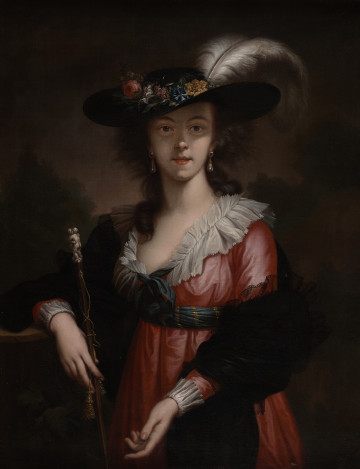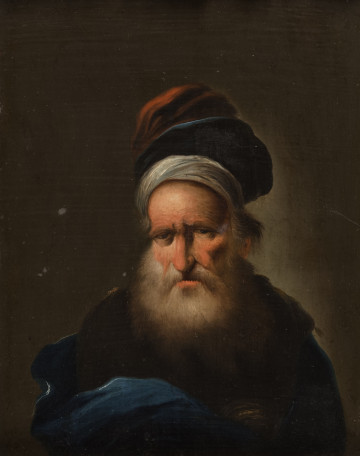
Self-portrait Elisabeth Vigée - Lebrun
Castle Museum in Łańcut
Part of the collection: Malarstwo i rysunek
Maria Kazimiera Sobieska as the Jutrzenka [morning aurora] A further painting from the former collection of the Potoccy, the former owners of Łańcut castle; it is a unique portrait of Maria Kazimiera Sobieska, queen of Poland, depicted as the morning aurora surrounded by three putty – personifications of winds. One of them is holding a rose basket, another is carrying a lit torch suggesting the approach of the morning, a third one is pouring water from a vase he is holding (morning dew). The putti are three sons of the royal couple, James, Alexander and Konstanty. The queen is wearing trailing attire and a wreath on her head, throwing roses from a basket held by one of the winds. The tondo is a 19th century copy from a plafond from the Mirror Chamber of the Wilanów palace (Museum of King Jan III’s Palace at Wilanów). The original is a work by Jan Reisner, a Polish painter and architect tied to the court of king John III Sobieski – together with Jerzy Szymonowicz-Siemiginowski they decorated the royal Wilanów Palace. Marie Casimire Louise de La Grange d'Arquien (b. 1641, d. 1716 r) was the daughter of a French marquis and a court stewardess of Louise Marie Gonzaga, later queen of Poland, wife to Ladislaus IV Vasa. Together with Marie Gonzaga, as a four-year old, Maria Kazimiera came to Poland, where in 1658 she married Jan Zamoyski, voivode of Sandomierz, who died a few years after the marriage. Widowed in 1665, she became the wife of Jan Sobieski. What is important is the fact that the marriage was one of love, a rarity at the time. She had thirteen children with Jan Sobieski, of which only four reached adulthood. She became queen of Poland in February 1676. After the death of John III Sobieski she left for France, where she died. The aurora (or Eos, or Jutrzenka) is a tytaness, the goddess of the morning and the aurora, who dispelled the darkness of night and announced the light of day to people; the depiction of Maria Sobieska (called Marysieńka) as this goddess, stresses her role as the „one who brings light to the people”.
Author / creator
Object type
Painting and drawing
Technique
oil
Material
wood, canvas
Creation time / dating
Creation / finding place
Owner
Castle Museum in Łańcut
Identification number
Location / status

Castle Museum in Łańcut

19th (?) century
Castle Museum in Łańcut

18th century
Castle Museum in Łańcut
DISCOVER this TOPIC
National Museum in Szczecin
DISCOVER this PATH
Educational path